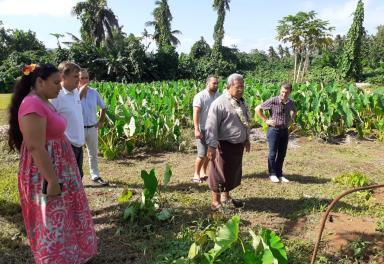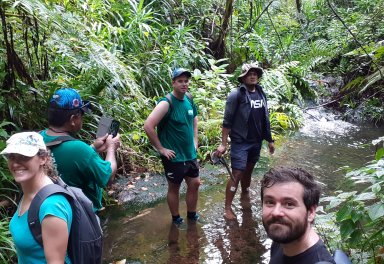In the Marquesas Islands, a rat eradication operation by drone
Fighting against the Little Fire Ant and conducting rat eradication operations.
More practical, maneuverable, and cost-effective than helicopters, drones are increasingly being used in the field of conservation. An unprecedent campaign for rat removal by drones will soon take place in the Marquesas Islands.
A unique rat removal campaign is about to be launched in the Marquesas Islands, specifically targeting three motu (small islets) on the island of Ua Pou. Introduced by humans during the early migrations, the Polynesian rat poses a threat to several bird species in the region.
Tehani Withers, project manager for island restoration and member of the Ornithological Society of Polynesia Manu, has been working on this operation for several years. She explains: "In Polynesia, there are three rat species introduced by humans: the Polynesian rat, the black rat, and the Norwegian rat. The black rat is present on almost all inhabited islands, while the Norwegian rat is found on larger islands like Tahiti. The Polynesian rat is found on most of the motu that people used for fishing, collecting eggs, feathers, and so on. That's why many motu, which are important for seabirds, have rat populations."
Rats prey on birds, particularly those nesting on the ground or in burrows, such as petrels or puffins. Withers adds: "They primarily eat eggs and chicks, and for puffins, they even prey on adults.' As a result, these birds have abandoned the motu. By eliminating rats, it should be possible to encourage their return to their natural habitats.".
For this rat removal campaign, drones have been chosen, as it has proven effective in the Galapagos, in Wallis and Futuna under the PROTEGE project, as well as here in the Gambier Islands and on an atoll in the Tuamotu Archipelago.
For this particular operation, the Louis Malardé Institute was involved. Hervé Bossin, Director of the Medical Entomology Laboratory, expresses their interest in diversifying the applications of aerial release and spreading methods, stating: "We are very interested in the diversification of applications using drones. Clearly, drones will be the future methodologies in the fieldwork we conduct." The Louis Malardé Institute is also exploring the use of drones in their work on mosquito control. Drones enable '"remote sensing", measurements, high-resolution image capture, and "better preparation for operations and treatment. It's an innovative technology."
This operation is carried out as part of the PROTEGE project, funded by the European Union and implemented by the Pacific Regional Environment Programme (PROE).
Discover the complete article from which this news is extracted at:
In the Marquesas Islands, a rat extermination operation by drone • TNTV Tahiti Nui Télévision
and the video of the operation on Facebook: https://fb.watch/lpF_j2HBma/
Copyright image : TNTV







